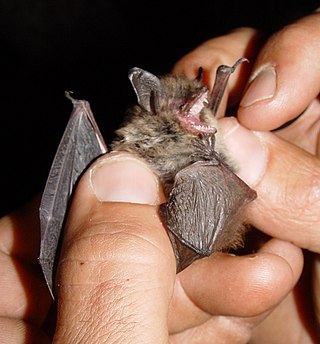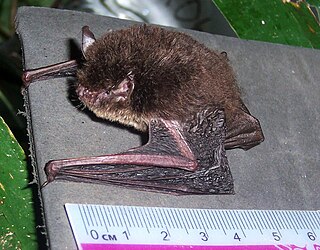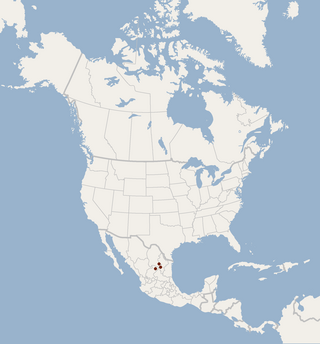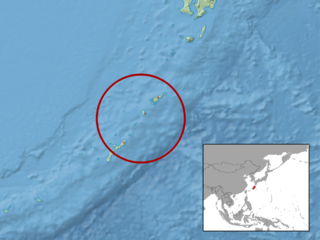
Vespertilionidae is a family of microbats, of the order Chiroptera, flying, insect-eating mammals variously described as the common, vesper, or simple nosed bats. The vespertilionid family is the most diverse and widely distributed of bat families, specialised in many forms to occupy a range of habitats and ecological circumstances, and it is frequently observed or the subject of research. The facial features of the species are often simple, as they mainly rely on vocally emitted echolocation. The tails of the species are enclosed by the lower flight membranes between the legs. Over 300 species are distributed all over the world, on every continent except Antarctica. It owes its name to the genus Vespertilio, which takes its name from a word for bat, vespertilio, derived from the Latin term vesper meaning 'evening'; they are termed "evening bats" and were once referred to as "evening birds".

The mouse-eared bats or myotises are a diverse and widespread genus (Myotis) of bats within the family Vespertilionidae. The noun "myotis" itself is a Neo-Latin construction, from the Greek "muós and "oûs", literally translating to "mouse-eared".

The velvety myotis, is a species of vesper bat from South America.

Rüppell's or the greater broad-nosed bat is a species of vespertilionid microbat found in eastern Australia.

The chocolate pipistrelle is a species of vesper bat in the family Vespertilionidae. It is found in China, India, Myanmar, Nepal, and Sri Lanka.

The fringed long-footed myotis is a species of vesper bat in the family Vespertilionidae. It is found in China, Taiwan and Hong Kong.

The wall-roosting mouse-eared bat, or Nepalese whiskered myotis is a species of vesper bat whose type locality is Nepal.

The flat-headed myotis is a species of vesper bat. It is endemic to Mexico where it is found in certain montane forests in the Sierra Madre Oriental in the northeast of the country. Once thought to be extinct, this bat was rediscovered in 2004 by Joaquín Arroyo-Cabrales and colleagues. The species is now classified as endangered by the IUCN.

The frosted myotis is a species of vesper bat. It is found only in Japan.

The Yanbaru whiskered bat(Myotis yanbarensis) is a species of vesper bat in the genus Myotis.

Jones's roundleaf bat is a species of bat in the family Hipposideridae. It is endemic to southern West Africa. Its natural habitats are subtropical or tropical dry forest, savanna, subtropical or tropical dry lowland grassland, rocky areas, and caves and other subterranean habitats.

Myotinae is a subfamily of vesper bats. It contains three genera: Eudiscopus, Myotis, and Submyotodon. Before the description of Submyotodon and analysis of its phylogenetics, as well as a phylogenetic analysis of Eudiscopus, the only member of Myotinae was Myotis.

Miniopterus mahafaliensis is a bat in the genus Miniopterus that occurs in southwestern Madagascar. Populations of this species have historically been included in Miniopterus manavi, but molecular data published in 2008 and 2009 indicate that this supposed species in fact consists of five separate species, including the newly described M. mahafaliensis. The species has been found in dry, spiny, and gallery forest, as well as more open habitats, in southwestern Madagascar.

The Alcathoe bat is a European bat in the genus Myotis. Known only from Greece and Hungary when it was first described in 2001, its known distribution has since expanded as far as Portugal, England, Sweden, and Russia. It is similar to the whiskered bat and other species and is difficult to distinguish from them. However, its brown fur is distinctive and it is clearly different in characters of its karyotype and DNA sequences. It is most closely related to Myotis hyrcanicus from Iran, but otherwise has no close relatives.

Escalera's bat is a European bat in the genus Myotis, found in Spain, Portugal, and far southern France.
The Armenian whiskered bat, also known as the Hajastan myotis or the Armenian myotis, is a species of bat from the family Vespertilionidae. The Armenian whiskered bat was formerly included as a part of the whiskered bat, but was considered distinct in 2000 as a result of morphologic comparison.
The Taiwan broad-muzzled bat or Taiwan broad-muzzled myotis is a species of vesper bat found in Taiwan.

Myotis izecksohni is a species of mouse-eared bat that is endemic to Brazil and Argentina.

The long-tailed myotis is a species of vesper bat found in northern and eastern Asia.
Myotis hyrcanicus is a bat in the genus Myotis known only from northeastern Iran.


















